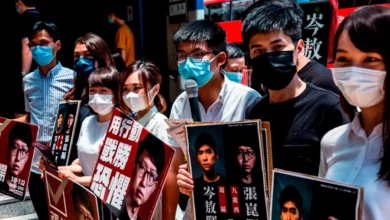My first encounter with the concept of “democratic transformation” was in South Africa in 2004, when I attended a seminar in Cape Town at the Center of Higher Education Transformation, and asked why the center was given that name.
The center’s head said: “There are times when you cannot introduce reform on a structurally corrupt basis. The higher-education environment in a context of apartheid cannot serve as a basis to build on or reform. To address the higher education enrollment rate differential between whites and blacks in South Africa, there is a need for more dramatic change to break the promoted underlying culture of natural differences.”
Many years passed and I discovered that the concept was spreading as an alternative approach, not only to the reform proposals adopted by former President George W. Bush after September 11, but also to the concept of “democratic transition.” This was the subject of much theorizing in the 1990s as a guiding framework for democratization in eastern and central Europe, in the context of the so-called third wave of democracy.
I recalled the distinction between “democratic transformation” and “democratic transition” as I followed the huge efforts exerted by human rights organizations and rights movements to restructure the security sector and the Interior Ministry. These activist organizations and groups — the majority of whose members are under the age of 40 — believe that security reform is a necessary prerequisite to any democracy-building process.
And hence, they take a firm stand on stopping all security violations against citizens, including the killing, torture, injury and rape of protesters and detainees, both male and female.
Just as was the case in South Africa, the demands issued by these organizations are more radical than those made by opposition political parties and groups, including the National Salvation Front. This difference is not attributed only to the radicalism of civil-society activists in comparison to figures who belong to the traditional political space. More importantly, rights activists reject the narrow concept of “democratic transition” as an effective approach for real change in Egypt.
Traditional politicians, in contrast, view the “democratic transition” approach as the only way to change the basis of legitimacy of the political regime. This involves following a predefined set of steps, including conducting free elections, endorsing a new constitution and gradually expanding institutional reform in a number of strategic sectors. This formalistic checklist approach is exactly what the rights activists have come to criticize as signs of failure.
The mentality that governs Egypt’s democratization process is skeptical of all forms of participatory democracy from below which the rights activists strive to buttress. This has been clear in all the twists and turns of the past two years — the road map for “orderly democratic transition” drawn by the Supreme Council of the Armed Forces in March 2011, the repeated calls for ending street protests and workers’ strikes, the restriction of civilian supervision of elections, the expansion of military trials and the management of the constitution-writing assembly.
The “democratic transition” mindset can be seen clearly in the happy and hasty endorsement of a law in March 2011 that allowed all political powers, even those that adopted violence and political assassinations in the past, to form parties, while looking warily at any law that tried to defend the freedom to protest, organize and express beliefs (mainly new laws on labor unions and NGOs).
This contradiction can only be understood in light of the distinction our rulers (and their opposition) make between two democratic philosophies: that of “democratic transition,” which limits democracy to unrigged polls, and that of “democratic transformation,” which expands the horizons of democracy to popular participation, and inclusive and diverse political modes of participation.
The demand to restructure the security sector and implement accountability mechanisms serves as a perfect example to highlight the differences between the two approaches to democracy. While the first view suffices with the philosophy of the third-wave democracy that makes voting in elections the main citizenship right in a democracy, the second seeks to create diverse legal guarantees to change the mentality of authoritative institutions and continuously subject them to accountability before and after elections.
So is there going to be political and public support for this second view to prevent the (re)production of a new authoritarianism that hides behind a fake legalized pluralism? Or is the opposition going to remain to focus on the nature of the political regime and its eventual role in the emerging dominant alliances?
Dina el-Khawaga is a professor in Cairo University’s Faculty of Economics and Political Science, and programs director at the Arab Reform Initiative in Paris. This article was translated by Dina Zafer.
This piece was originally published in Egypt Independent's weekly print edition.




